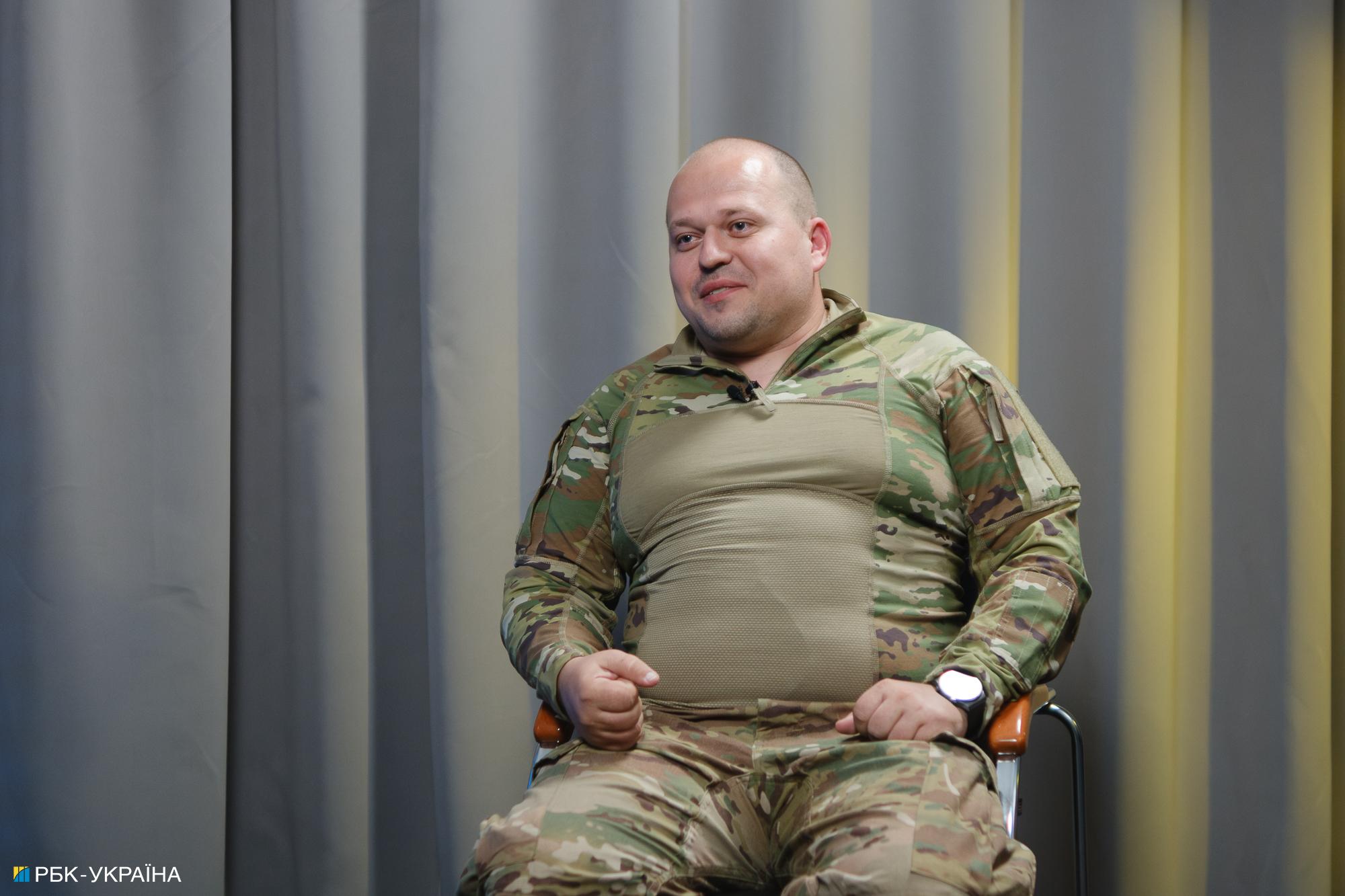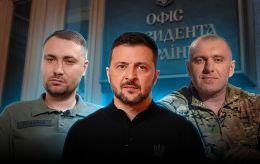Zmiinyi Island and Boyko Towers liberation: Intelligence officer on special operations against Russians
 Officer of the Artan special forces unit of the Main Intelligence Directorate with the call sign Natsyk (photo: RBC-Ukraine)
Officer of the Artan special forces unit of the Main Intelligence Directorate with the call sign Natsyk (photo: RBC-Ukraine)
The officer with the call sign Natsyk from the Artan special forces unit of the Main Intelligence Directorate of Ukraine talked about the operations to rescue the Boyhko Towers, landings in Crimea, and the specifics of the intelligence units' work in an interview with RBC-Ukraine.
The officer of the Artan reconnaissance unit received his call sign, Natsyk ("Nationalist", ironically), because he had previously served in the National Guard. From the very first day of the full-scale war, he volunteered. Initially, he defended his hometown of Vasilkiv. When the battles in the Kyiv region ceased, he decided to continue defending the country, which led him to join the reconnaissance unit.
Natsyk participated in the toughest operations that not every other unit could handle. However, as he recalls, he and the guys from Artan take on the most unconventional special operations, such as missions behind enemy lines, landings in Crimea, and the rescue of Boyko Towers in the middle of the Black Sea.
The full version of the interview is available on the RBC-Ukraine YouTube channel. Below are separate fragments of the conversation.
Formation of the Artan special unit
The unit was formed from the very first days of the war. Initially, a small group participated in battles near Kyiv and various other conflicts and battles. But by July, when I joined the unit, there were about 70-80 people.
There are people from various backgrounds in the unit. The majority are athletes, former or current. We have world champions in some sports who serve and participate in combat operations. The composition is 50/50, with civilians and those who previously served in other units, including airborne troops, special operations forces, and even units from military commissariat security companies.
However, we have a unique feature: we don't recruit through military conscription or mobilization. Only people recommended by current members can join our unit. A person serving in our unit can recommend a friend who wants to join, and then we review their application, conduct a background check, and only then do we admit them.
Operations in Bakhmut and Enerhodar
The first combat operation we were involved in was in Enerhodar, in collaboration with the Shaman and Kraken battalions. The operation in Enerhodar was ideally supposed to be an amphibious landing with a clearance mission. We understood that crossing the Dnipro River on rubber boats was quite an ambitious idea, but we managed to succeed.
During that operation, we had several clashes with the enemy. They had deployed so many forces there that it made it easier for our troops to advance on other fronts. There were real amphibious landings and sabotage missions. I can't disclose everything, but our unit and adjacent units conducted landings on the shore. There were approaches to the shore, exchanges of fire, and many other events. There was a lot of water there.
We also took part in the battle for Bakhmut, providing support to the infantry alongside our comrades in the trenches and the Armed Forces of Ukraine. Then, in March, we had our second clash near Bakhmut. This was when the town was being encircled, and together with other units, we successfully opened the road to Klishchiivka to prevent the Ukrainian Defense Forces from getting trapped there.

Most challenging operations
Honestly, the most challenging operation is where we lose our guys. There's no such thing as an easy operation or a difficult one. Every job is tough in its own way. The specific nature of our unit is that we go on operations that others simply don't want to dare to, or don't have the ability to carry out. For example, right now, there's an operation in the Black Sea, an operation "on the other side." Units like us, Shaman, and Kraken participate in the most adventurous operations that are unconventional for the Armed Forces.
Occupation of Zmiinyi Island
The return of Zmiinyi Island is a serious process that took place about a year ago. There was an operation involving the Main Intelligence Directorate, and Shaman unit, and our guys. There were losses, and the Russians had established a strong presence there. They fought, and for a while, we let go of the island.
Then the question of control over the Black Sea arose. Control over the Black Sea is impossible without Zmiinyi Island as a logistical base to store additional materials that we might need.
Because of this, we made efforts to occupy Zmiinyi Island in a way that there were no enemies there at that time. However, they kept flying over it, dropping various types of aerial bombs.
After showing our presence the first time we occupied Zmiinyi Island, they flew over it as if it were their own territory. After the first Stinger missile launches, they realized that we were there, and they stopped flying over it. Now they launch rockets toward the island from somewhere 30-50 kilometers away.
Boyko Towers liberation
This was achieved for the first time thanks to the courage of our guys, who simply got into boats, sailed 100-150 kilometers into the open sea in small boats, and occupied these towers. Why is this important? Why is Russia afraid? It's because, as I mentioned, we always work in coordination.
Our naval forces have the Neptune missiles, and there are many in the Security Service of Ukraine and other adjacent departments. The Main Intelligence Directorate has surface drones, aerial drones, and strike drones, so we have all that. We can target and strike. Knowing that we are on the towers and can detect their targets, they are afraid to send out large ships. Thus, our occupation of certain key objects forced the enemy not to send ships out of the harbor, even to stay close to Crimea.
Thank God, all our people managed to return safely. There were several groups, around forty to fifty people.
Interestingly, on one of the towers, we found Russian detection equipment that was not removed when they fled from there.

Rescue of a soldier who spent 14 hours in the sea
This was one of the first operations. Due to some technical issues, we returned a bit later than planned because it was already getting light. When it's dawn, enemy fighter jets can visually spot even small boats and attempt to attack.
There was a chase, much like in a movie. For approximately an hour, an enemy Su-30 pursued our boat. It came at us once, twice, three times, trying to hit us. Our boat maneuvered. And on one of the sharp maneuvers at high speed, unfortunately, one serviceman fell overboard. After that, the boat circled, trying to retrieve him, but due to the height of the waves, he was simply not visible. The boat sustained some minor damage but made it back safely. All the guys gathered, and we initiated a rescue operation, involving naval forces, and our partners, everything available.
Initially, we struggled to determine the serviceman's location. The Bayraktar drone spotted him, and then the ship with our soldiers moved toward the rescue from the Boyko Tower. There was a risk, but saving a life was the top priority.
Artan unit deployment in Crimea
This is just a signal. I cannot comment on the entire operation, but I can say that the de-occupation of Crimea continues. This is a signal that the Main Intelligence Directorate can do it. We'll see what it's for in the future.

